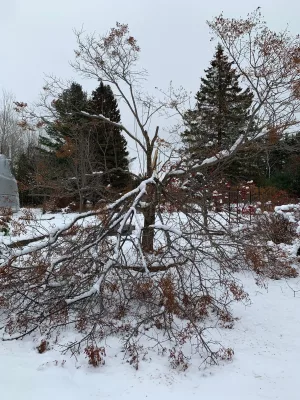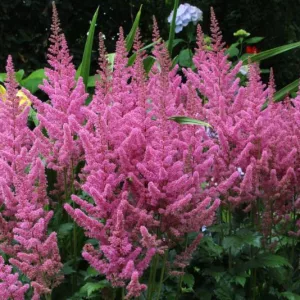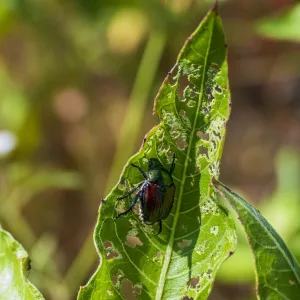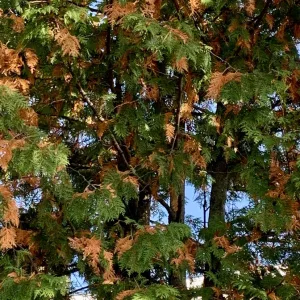Well wasn’t that an interesting end to 2019! I don’t know about you, but we were out of power for about 36 hours. It came on again New Year’s Day at 6:00 am.
I will admit that I was very happy that we had a generator that kept a few lights on, the fridge powered, the septic pump working and the well pump operating. With the fireplace keeping us warm, we were well able to take care of ourselves. I hope you all were ok too.
When the world started to get coated with a layer of ice and then fresh white snow started to build up on trees and shrubs, it was pretty magical looking outside. However, we all know that eventually the weight of all that ice and wet snow will cause problems for trees and shrubs.
We were quite lucky here that only a few small branches came down, not causing any damage at all. When I took a walk through the bush trails today, I saw some major limbs down but again not a huge amount of damage. We can be thankful that high winds didn’t develop when all that weight was on the trees. If you weren’t so luck at your home, here is a bit of advice about how to handle the damage.
If you can see broken branches on shrubs, don’t hesitate to prune them back to remove the damage. The snow isn’t deep right now, so you may be able to access that part of your garden quite easily.
If you have shrubs, especially evergreens, that have splayed open with the heavy snow load, there are a few options for dealing with this problem. I’ve always found pantyhose excellent for pulling branches back into place. They are strong, yet supple and easy to work with. They also are soft so don’t tend to abrade the bark of branches.
By gently when pulling branches back together. Your goal is supporting weak areas, therefore preventing further damage that could occur from future snow loads this winter.
If you have a very bushy evergreen that is hard to pull together you could get some mesh to help with this problem. Secure it as low down on the shrub as possible and then start winding it around the shrub, pulling in as much as you can as you go around. Secure the mesh on the top once you have completed the wrapping. A partner on this job would be a great help!
I saw quite a few people posting photos of limbs on threes that had bent right down to the ground with the snow load. Check to see if branches have cracked. If not, try to free them if they have frozen into the snow. Hopefully once you have, they will spring back into place.
If there is a small crack that you think might heal come springtime, try to get the branch up to its normal position and support it with a forked crutch or if small enough, run pantyhose up to the next major limb for support.
If the limb has broken most of the way through, it is best to get your saw out to remove the branch. By cutting off the majority of the weight pulling down on the branch, this should prevent the bark from tearing further down the trunk of the tree. Your goal is to have the smallest wound possible so that it will heal quickly. Again, having someone on hand to help with this task is wise. Your helper can support the limb close to the tree while you start to saw through, ensuring that the base of the limb doesn’t drop further, tearing more bark.




